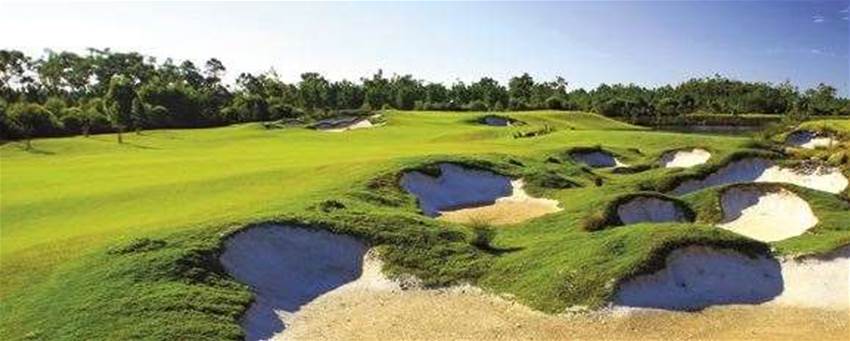Your ultimate guide to Queensland's Sunshine Coast - One of Australia's premier golfing destinations.
For the holidaymaker, the picturesque stretch of Queensland coastline incorporating Bribie Island in the south to Cooloola in the north has it all. More than 100km of pristine beaches combine with the tranquil beauty of the Glasshouse Mountains, Blackall Range and Noosa Hinterland to provide one of the great natural wonders of this country.
However, the Sunshine Coast is more than just the perfect mix of coast and country. It is the idyllic location to relax and unwind – spoil yourself at a day spa, feast on five-star cuisine, feel the sand between your toes on a beach walk or, of course, play golf under deep blue, sun-drenched skies.
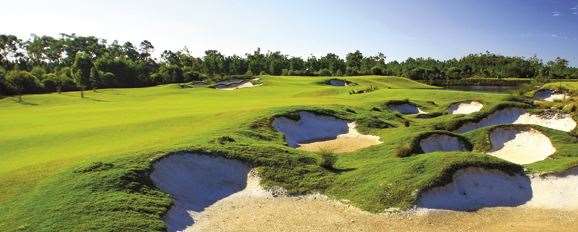 Pacific Harbour is a highly ranked Ross Watson design.
Pacific Harbour is a highly ranked Ross Watson design.Golfers are spoilt for choice on the Sunshine Coast with world-class resort and public access courses as well as some impressive member clubs that welcome visitors most days of the week.
When you are planning your next golfing holiday, consider the Sunshine Coast and a selection of courses featured over the following pages.
BRIBIE ISLAND GOLF CLUB
Bribie Island is one of the sand islands of Moreton Bay and its natural sand base provides the perfect foundation for growing quality playing surfaces on rolling terrain that also boasts terrific drainage.
Even though Bribie Island Golf Club is a stone’s throw from the sea, it is 18 holes in a bushland setting that is closer to offering a Melbourne Sandbelt experience than any other Queensland layout. There are some holes here that are really not that far removed from those you would find at Woodlands or Yarra Yarra in the heart of the Sandbelt.
The Sandbelt-style bunkering is one of the highlights of the 6,162-metre par-72 layout, which features fairways thickly lined in parts by a wide variety of native trees. The rough is fairly sparse and sandy lies are pretty common.
 Pacific Harbour’s long par-3 17th features a ‘beach’ that runs the entire length of the hole.
Pacific Harbour’s long par-3 17th features a ‘beach’ that runs the entire length of the hole.Another highlight is the huge, Bermuda 328 putting surfaces that are seemingly always well-presented, while the slope of the greens offers plenty of challenges with the flatstick in hand.
The opening hole – a 349-metre, par-4 dogleg right – offers a real taste of Sandbelt golf with large bunkers hugging the left side of the fairway narrowing the driving zone. Stay clear of the sand and the approach to a two-tiered green is fairly straightforward.
 Bribie Island’s greens feature challenging undulations and the greenside bunkering is Sandbelt-like.
Bribie Island’s greens feature challenging undulations and the greenside bunkering is Sandbelt-like.Bribie Island boasts a very good collection of par-3s with the 172-metre 16th being the most memorable of them. The tee shot here must carry the edge of a lake and a sandy wasteland en route to the narrow green. It is one par-3 at Bribie Island where mis-hitting your tee shot to finish short and left of the putting surface is a pretty good result.
In January this year, Bribie Island was ranked No.92 in Golf Australia’s list of the nation’s Top-100 Public Access Courses.
PACIFIC HARBOUR GOLF & COUNTRY CLUB
Pacific Harbour Golf & Country Club opened in April 2006 and the reviews that followed could not speak more highly of the Ross Watson-designed par-72, located towards the northern end of Bribie Island.
The stunning course and magnificent $11 million clubhouse have continued to impress, with the layout ranked at No.22 among Australia’s Top-100 Public Access Courses in 2013.
 Bribie Island’s par-3 16th, calling for a long water carry, is a gem.
Bribie Island’s par-3 16th, calling for a long water carry, is a gem.While the views of the Glasshouse Mountains from the clubhouse deck are certainly memorable, it is the quality of the star attraction – the golf course – that you will long recall. Watson’s creation is superb in that it presents a stern challenge for better players without being too hard for the casual or holidaying golfer.
Watson has a flare for creating superb par-3s and he doesn’t disappoint at Pacific Harbour. While the likes of the 4th and 17th are picturesque as they skirt the edge of large water hazards, it is the 13th, known as ‘Kakadu’, that is demanding of good shot-making and correct club selection. The 155-metre hole overlooks the adjoining national park and is quite open to the breeze, which is usually in your face as you stand on the tee.
Pacific Harbour has matured beautifully over the past seven years and if you haven’t played it yet, you should out on your list of courses to play sooner rather than later.
PELICAN WATERS GOLF CLUB
Pelican Waters is one of the finest Australian examples of how modern golf course designers can create a top layout just about anywhere.
 Pelican Waters’ par-5 3rd is appropriately named ‘Beaches’.
Pelican Waters’ par-5 3rd is appropriately named ‘Beaches’.Designers Greg Norman and Bob Harrison turned flood-prone land just south of Caloundra into one of Queensland’s finest courses. In fact, the 6,289-metre par-72 was listed at No.21 in Golf Australia’s Top-100 Public Access Course ranking in January this year, making it the No.1 layout on the Sunshine Coast.
During their years together as a design team, Norman and Harrison, who are both keen students of the design work of Dr Alister MacKenzie, turned the design clock back almost a century to create layouts with short par-4s, risk-and-reward par-5s and the occasional punchbowl green. Pelican Waters is no different.
The first six holes of the layout are superb. From the back markers, there is nothing too strenuous in terms of length but strategy and shot placement are very important.
Of these holes, three are par-4s and the longest is the 1st at 355 metres. But it is the 5th hole, known as ‘The Passage’ that will impress. At 345 metres, it is a classic par-4 with a generous fairway flanked by water left and four large fairway bunkers hugging its edges at strategic points. The lake cuts the fairway in two just short of the green, which lies diagonally to the line of the fairway. Two cavernous bunkers can be found behind the green to trap the player who takes too much club for fear of falling short in the water.
The following hole, a 149-metre par-3 known as the ‘Glasshouse’, is a terrific hole that appears to have been loosely modelled on two of golf’s most famous par-3s – the 12th (Golden Bell) and 16th (Redbud) at Augusta National, home of the Masters. The tee shot is played over water to a Redan-style green and there is plenty of area short and right of the green to leave a ‘good miss’.
The greatest improvement that has evolved at Pelican Waters is the thickening and maturing of the green barrier of trees and shrubs that separate the holes from the surrounding residential development. Hitting into a backdrop of trees rather than luxury homes certainly adds to the golfing experience.
 The 18th hole at Caloundra Golf Club is a testing closer.
The 18th hole at Caloundra Golf Club is a testing closer.CALOUNDRA GOLF CLUB
Caloundra Golf Club is a traditional bushland course where accuracy and good shot-making are demanded by the often tight layout.
Former British Open champion Ian Baker-Finch learned the game at Caloundra, which has also produced numerous state and national champions.
Stretching to just 5,960 metres off the back markers, the par-71 has some very impressive holes surrounded by lush vegetation that is home to kangaroos and a wide variety of birds, including rainbow lorikeets. The terrain varies from relatively flat to undulating, with some of the best holes covering the more dramatic landscape.
The front nine features back-to-back 500-metre-plus par-5s but it is the first of these – the 515-metre 4th hole – that is a true gem. You can’t see the green from the tee as your drive must carry a lake to find the fairway, which climbs up and over the crest of a hill that slopes markedly down from right to left. Hit the high right side of the fairway and there is a plenty of run on offer as you head over the hill and turn slightly left heading for the green. A decision needs to be made as to whether you lay-up or carry a creek about 50 metres short of the slightly elevated putting surface. This is a terrific three-shotter where players of all abilities can excel or come a cropper.
Another aspect to like about this course is the variety of hole shapes that call for fades and draws from the tee. Not one shape dominates, which certainly adds to the shot-making appeal of this layout.
 Headland Golf Club’s toughest hole is the long par-4 15th, which culminates in trying to hit a narrow, undulating green, protected by two bunkers.
Headland Golf Club’s toughest hole is the long par-4 15th, which culminates in trying to hit a narrow, undulating green, protected by two bunkers.HEADLAND GOLF CLUB
It is hard not to be impressed with the view that confronts you as you round the corner of the clubhouse from the Headland Golf Club carpark en route to the pro shop.
The view of the Mooloolaba coastline from the Buderim-based club is one of the best on the Sunshine Coast and adds to the memorable round you will have at Headland, a well-designed course that has been hosting visiting golfers since it was a nine-hole course back in 1958. Just over seven years later, the course was extended to 18 holes. While the routing has been tinkered with only slightly during the past 45 years, most of the major changes have been to the greens, lengthening of holes and the creation of new tees.
Today, Headland is a modern layout with large, rolling greens covered with beautifully maintained Bermuda grass.
Vast tracts of the layout can be seen from the clubhouse balcony but some of the best holes are across the lower reaches of the course and cannot be seen. By far the best of these is the 341-metre par-4 12th, which is one of the more visually impressive holes on the Sunshine Coast. Coming out of a chute created by a wall of trees left and right, the drive needs to be into the right side of the fairway to avoid kicking down into the lake that comes into play about 150 metres from the tee. The lake then closely hugs the left edge of the short grass all the way to the long green, which is protected by a sole bunker cut into the short, left fringe. By far the best miss with your approach is to the right but even then you will need to chip over some mounds onto the green.
The 12th is the first of an impressive and challenging sequence of holes leading back to the clubhouse, with the long par-4 15th and 16th holes being the absolute highlights of the round.
 The closing hole at Horton Park is a short par-4 but there are several options to tryto make birdie.
The closing hole at Horton Park is a short par-4 but there are several options to tryto make birdie.HORTON PARK GOLF CLUB
Horton Park has been a part of the Maroochydore landscape for decades, having started as a small nine-holer and then being expanded to 18 holes. By the late ’90s, residential and commercial development of its surrounds virtually landlocked the course in the CBD.
The par-72 is widely regarded as one of the best presented member-based clubs on the Sunshine Coast and the layout offers a good mix of demanding holes and those all players will find fun to play.
Horton Park is not a long course and as a result it boasts some short par-4s, with the best of them coming at the final throw of the dice. The 300-metre 18th demands a well-positioned tee shot of about 180 metres to avoid the cross bunkers and/or getting blocked out on your approach to the green by trees left of the narrow fairway. It’s a large subtly sloped green that is protected by four bunkers. That said, long hitters might like their chances of flying the sand and leaving just a short pitch to the flag.
But if you want to experience this enjoyable layout you will have to get on your bike and organise a game there soon.
Plans to move from the centre of the Maroochydore CBD were first tabled about eight years ago when the club accepted an amazing deal, running into the tens of millions, from Babcock & Brown but the global financial crisis and the collapse of the global investment firm put an end to that.
The most recent deal has come from the Sunshine Coast Regional Council, which has paid $42 million for the 53-hectare site and will redevelop it as Maroochydore’s new CBD.
In the meantime, construction has begun on a new home for the club, which will be called Maroochy River Golf Club, located about eight kilometres west of Maroochydore on the north side of the river and less than two minutes’ drive from Twin Waters Golf Club.
The Graham Marsh-designed layout, covering what were flood-prone sugarcane fields, was due to open next June but record rainfalls during the first six months of this year will delay the opening to March 2015.
 Twin Waters is a beautifully manicured layout that will host the Championship Final of the Holden Scramble for the next three years.
Twin Waters is a beautifully manicured layout that will host the Championship Final of the Holden Scramble for the next three years.TWIN WATERS GOLF CLUB
With its spacious fairways, rumpled putting surfaces and a huge aquatic driving range, Twin Waters has remained a fixture of Sunshine Coast golf ever since the Peter Thomson and Mike Wolveridge design opened for play in 1991.
The course doesn’t appear to be the most difficult test around yet it plays far tougher than first impressions suggest. Thomson/Wolveridge pot bunkers are dotted across most fairways like moon craters, all designed to swallow anything bouncing towards them. The greens are mostly broad and feature gentle rather than wild undulations but those subtleties ensure they are difficult to read. Many are ‘push-up’-style putting surfaces with runoffs that turn many a good iron shot into a missed green and a challenging up-and-down.
The most memorable hole is the 379-metre 8th, which bears a slight resemblance to the Road Hole at St Andrews. Rather than driving across a hotel, however, the carry here is across a lake and bunkers before a tough approach to a raised green with a single, deep pot bunker guarding the left side and all manner of strife over the back. Two more differing par-4s on the back nine examine your shot-making. The 12th fairway narrows the longer you hit the tee shot as ten bunkers tighten the landing zone on the 325-metre hole, while the 13th doglegs left around two pots with water further left. The green is defended by a large scoop in the front that will send any weak approach shot back into the fairway.
Twin Waters’ closing holes offer contrasting fortunes. The 17th is a devious long par-3 with no margin for error and almost zero chance to bounce the ball onto the green from the 202-metre back tee, while the
18th is a reachable par-5 of just 462 metres to a big green fronted by a steep bank.
 Mt Coolum is a spectacular backdrop to your approach into the par-5 17th hole at the course of the same name.
Mt Coolum is a spectacular backdrop to your approach into the par-5 17th hole at the course of the same name.MT COOLUM GOLF CLUB
Set at the foot of spectacular Mt Coolum, the golf club of the same name is rated by locals as one of the Sunshine Coast’s most demanding member-based layouts. Visiting golfers will, however, be pleasantly surprised at this hidden golfing gem.
While it’s similarly named and more famous resort-course neighbour grabs a big slice of the visiting golfer market, those who seek out and discover the delights of Mt Coolum won’t be disappointed.
The course opened for play as a nine-holer in 1976 and was known as Suncoast Beach Golf Club. A name change to Mt Coolum came in the mid-’80s and a further nine holes were added and completed in 1992.
With the course being built in two stages, possibly with differing budgets and across varying lsndcapes, there is a definite mix of tight tree-lined fairways and wider more generous landing zones. There is also an interesting blend of small, subtle-sloping greens and larger undulating greens … all of which compensate for the course measuring only 5,901 metres from the championship markers.
The best holes cover the southern half of the course. These include the challenging trio of holes spanning the 523-metre par-5 4th, 194-metre par-3 5th and the 531-metre par-5 6th, which cut through and loop around wetlands and are heavily lined by melaleucas. These are not only demanding holes for all players, they lie in a beautiful setting where plenty of birdlife abounds.
Similarly, the back nine loop of the 13th, 14th and 15th holes are equally as impressive for their beauty.
Mt Coolum has six par-5s – including four on the back nine – with the most memorable being the 433-metre 17th, which doglegs left around a scheme of bunkers before turning back to the right around the edge of a lake. Your approach here can be over water to a well-bunkered green with imposing Mt Coolum in the background.
PALMER COOLUM RESORT
One of the truly iconic courses in not just the region but all of Queensland has endured a tumultuous period of late. Beginning with a redesign of one-third of the golf course in 2009 to establish a sought-after residential quarter on what were formerly the holes nearest the beach, Coolum then felt a change of ownership and management that saw Hyatt depart and Clive Palmer step in. More recently the resort bid farewell to the Australian PGA Championship, a staple of the Sunshine Coast sporting scene for 11 Decembers from 2002 to last year.
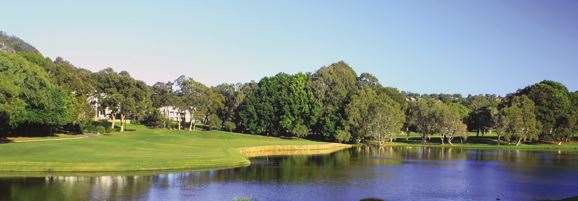
The design changes implemented by original architect Robert Trent Jones Jnr affected the first six holes, giving the layout an entirely new start at the expense of its original opener and a five-hole stretch across busy David Low Way that began at the 4th. It was one of those course alterations where the losses probably matched the gains. Gone are the postcard par-3 6th hole, where the imposing monolith of Mt Coolum stood as the perfect backdrop, and a pair of attractive par-4s either side of it that beautifully utilised the wetlands on this section of the former layout. The new holes, however, bring play to a previously unused section of the property behind the resort and clubhouse and now give us a fascinating par-5 to begin the round and two intriguing holes running in opposite directions at the par-5 3rd and short par-4 4th. The original course takes over after the tiny par-3 6th, with what was initially the 2nd hole now acting as the 7th.
One element of the golf course that hasn’t changed with the redesign, the change of ownership and the addition of “Jeff the Dinosaur”, an eight-metre high replica Tyrannosaurus rex situated between the 9th green and 10th tee, is the exciting, water-laden back nine. Amateur golfers’ knees tremble at the very thought of the inward half. Keep your ball dry on the back nine and you’re certain to score well.
 eregian Springs is now open to visiting golfers, who can experience some good quality holes like the short par-4 15th and the par-5 18th.
eregian Springs is now open to visiting golfers, who can experience some good quality holes like the short par-4 15th and the par-5 18th.PEREGIAN SPRINGS GOLF CLUB
Peregian Springs is arguably the least-known course on the Sunshine Coast simply because for much of its existence since opening a decade ago it was a strictly members-only layout.
Today, visitors are warmly welcomed with tee-times available seven days a week, with Monday, Thursday, Friday and Sunday being the best days to secure a time.
Designed by Phil Scott, father of Masters champion Adam Scott, the par-72 can be enjoyed by players of all standards, which is important for a course in the heart of a golf holiday destination.
“Our objective throughout the design was to provide a course that will offer different challenges to all players, whether they play daily or less frequently,” Scott said. “The course provides a variety of strategic options and the members will need to plot their rounds, taking on some of the hazards and steering clear of others.”
Each par-4 and par-5 offers choices on the tee to the better players, while there are no dauntingly long tee shots required over or between hazards that might send a high-handicapped player back to the clubhouse in search of more balls.
The opening four holes are quite generous and, in time, will be played among rows of luxurious homes as the Peregian Springs residential development continues to expand.
Scott’s first gem is the 312-metre par-4 5th. Quality short par-4s always excite and the 5th rates as the best of the four on offer at Peregian Springs. Standing on the tee, all you can see is the fairway rising gently in front of you and what appears to be the lip of a bunker on the crest of the hill to the left side of the fairway. It is a bunker and a big one at that. What you can’t see is a second sandy trap laying alongside and much closer to the centre of the fairway. In terms of risk and reward values, this is a terrific hole.
Most long hitters can blaze their drive over the bunkers and finish quite close to the putting surface after a generous kick down the far side of the hill. But out-of-bounds is not far to the left of this line, so it is a tee shot that has its risk.
Peregian Springs measures 6,169 metres from the back markers, which is not a lengthy excursion by modern standards. Again, this makes Scott’s layout a lot of fun because he relied on strategy, rather than length, in creating his first complete Australian design. In saying that, there are two par-5s – the 516-metre 7th and the 531-metre 9th – that are genuine three-shot holes for even the longest hitters.
Another contributing factor for a course to be a pleasureable experience is that it must have a good variety of par-3s, not just in length, but also in the type of tee shots they demand. Peregian Springs has four very different par-3s and the best of these is the shortest of the quartet – the 140-metre 14th.
As you stand on the tee, the hole appears quite simple, despite the fact you can’t see the bottom of the flag on the slightly elevated putting surface. The hole requires at least one more club than you would normally use to cover the same distance on a flat approach, as the green sits considerably higher than you realise. Three deep bunkers left and another to the right, all lining the front half of the green, will cause problems for any mis-hit
tee shot.
Another pleasing aspect about Peregian Springs is the quality of its playing surfaces. The course has matured considerably in its first decade and will continue to improve in the years to come.
 Noosa Springs’ par-4 17th hole demands a straight tee shot to avoid water and sand.
Noosa Springs’ par-4 17th hole demands a straight tee shot to avoid water and sand.NOOSA SPRINGS GOLF & SPA RESORT
Trendy Noosa exudes style and sophistication and a day or two spent at Noosa Springs exemplifies this notion. The Tuscan-style clubhouse and adjoining spa and resort facilities complement a scenic and strategic golf course that is susceptible to the swirling winds whipping off adjoining Lake Weyba.
The 2nd hole brings play closest to the lake. The 339-metre par-4 starts in a chute of trees before opening to a fairway that’s wider than it appears from the rear tee but one lined by dense foliage on both sides. The green is exposed to the fluky breezes and is large but shallow, forcing golfers to pick the right club. The front nine warms up further with an all-carry par-3 over water at the 4th and the best hole on the property at the next.
Designer Graham Papworth gave golfers a simple way of playing the 329-metre 5th, which is bordered by a lake that stretches along the entire right side of the hole. A long iron then a wedge or short iron avoids most of the danger, but the fairway widens about 200 metres from the tee as the hole doglegs gently right and so can be driven in certain wind directions with a powerful left-to-right drive. It’s one of those ingenious holes where pars are simple but bogeys and doubles are irritatingly more so.
The inward nine undulates more than the outward half and winds past Noosa Springs’ expansive residential precinct. Decisions are required on the 15th and 17th tees, the former a long par-5 made even longer by a creek cutting the fairway in the driving zone that effectively forces it to be played as a three-shotter for all but the biggest hitters, and the latter a 340-metre par-4 with water guarding the left side of the green, making finding the right position from the tee paramount.
 After some upgrades in recent times, Tewantin Noosa Golf Club has become a highlight golfing venue on the Sunshine Coast.
After some upgrades in recent times, Tewantin Noosa Golf Club has become a highlight golfing venue on the Sunshine Coast.TEWANTIN NOOSA GOLF CLUB
Tucked away from the glitz and glamour of Hastings St is Tewantin Noosa Golf Club, which first came to prominence as the original home of the Jack Newton Celebrity Classic. A haven for kangaroos and holidaying golfers, the club is also home to a vibrant membership that never tires of touring a layout characterised by several sharp doglegs.
The sharpest turns appear at the 414-metre 3rd and 321-metre 11th, two par-4s where the ability to shape the ball is essential. The 3rd is a big dogleg left that plays far shorter if you can hug the left edge or turn the ball around the corner. Conversely, the 11th twists right and while distance is less important here, the penalty for erring is greater as huge stands of paperbarks and other assorted towering flora will block any drive lost right or that’s too long and not faded to match the shape of the fairway. Balancing these tighter holes are several straight holes where flexing a little might off the tee is an advantage.
Three of Tewantin Noosa’s four par-3s measure between 130 and 138 metres yet each one presents a different challenge. The 5th, a newer hole than the others after the old par-3 3rd hole was removed from the layout, is a bunker-strewn downhiller with distinct sections to the green, while the 7th plays to a putting surface that feels smaller than it measures as it drops off at the edges. The 12th plays deceptively uphill from a sheltered tee to a green angled to favour a left-to-right approach.
NOOSA VALLEY COUNTRY CLUB
There are few, if any, prettier places to spend a few hours playing golf on the Sunshine Coast than Noosa Valley Country Club.
Located in a serene and picturesque valley about 20 minutes’ drive west of the tourist hustle and bustle of Noosa Heads’ Hastings St, Noosa Valley is a beautiful nine-hole layout which you might mistake for a botanical garden if it weren’t for the nicely manicured fairways and greens found between the trees.
Bursts of colour abound in and around the clubhouse, 1st tee and final green with flowering natives dominating the area. The colour continues on the course, which offers alternate tees to play to the nine greens. Adding to the enjoyment of the walk is spotting the occasional wood carving depictions of native wildlife in trees scattered across the course.
Noosa Valley is not a difficult course but it is fun. The par-3 6th/15th is one of the highlights where the tee shot has to carry the length of a lake to find the green lying at the end of the hazard.
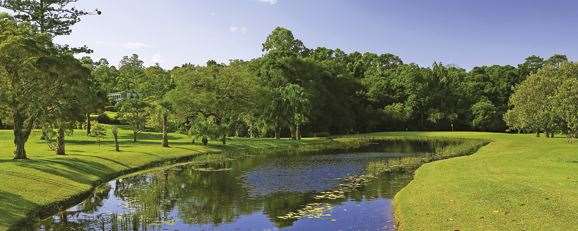 The pretty Noosa Valley course is laid out in a serene location.
The pretty Noosa Valley course is laid out in a serene location.But the most memorable hole at Noosa Valley is the final one leading back to the clubhouse. From the back tee, the 369-metre par-4 has a wide sloping fairway that lies beyond two large lakes, one in front of the tee and another to the right of the fairway. The fairway then narrows and dips before rising again to the slightly elevated green. It is a wonderful closing hole that requires some precise shot-making from tee to green to make par or better.
GYMPIE PINES GOLF CLUB
Heading north and inland from Noosa, there is a fun day of golf to be found at the end of a 45-minute drive up the Bruce Highway.
Gympie Pines, on the northern outskirts of the town made famous for its country music muster every August, covers primarily undulating topography. This has given rise to some very good, natural holes that meander over the terrain and present a range of challenging shots. The course has undergone a redesign in recent years after some of the club’s land was sold off for a residential development. More work is planned in years to come.
In the meantime, a round at Gympie Pines opens with one of the best holes on the layout. The 372-metre par-4 1st hole is a cracker, so if you’re not on your game from the first swing it could prove to be detrimental to your scorecard. From the elevated tee, it is easy to see how a drive must hug the right half of the fairway as it slopes markedly to the left while also rising over the crest of hill. Carry the hill and you will face an uphill shot to a green guarded by two bunkers, one left and one right. An over-clubbed shot will finish in thick greenside rough on a bank behind the putting surface.
Of the newest holes on the course, the par-5 13th presents a real birdie opportunity if you are willing to take a little risk en route to the green. At 444 metres, it is not a long three-shotter but the slight dogleg left does demand you position your drive in the right half of the fairway to give you a playing line to the well-bunkered green for your second shot. Avoid the bunkers and a chip-and-putt birdie could be yours.
SAVE MONEY & GRAB THE PASS
Looking for a great gift idea? Or just want to spoil yourself with an amazing golfing experience?
The Sunshine Coast Golf Pass gives you the chance to play four rounds of golf at three of the best courses on the coast for the price of just three rounds.
Play at each course – Pelican Waters, Twin Waters and Noosa Springs – then decide which you like best, and play your fourth round there. The Sunshine Coast Golf Pass represents a saving of more than $110 on green fees.
To purchase a pass, contact any of the three clubs mentioned above.
 WHERE TO STAY
WHERE TO STAY
 MAGNOLIA LANE APARTMENTS
MAGNOLIA LANE APARTMENTS
Located just 30 metres from the 1st tee of the Twin Waters course, Magnolia Lane Apartments is a good base to explore all the courses of the Sunshine Coast.
The apartments all have stunning views over the Twin Waters layout and boast large balcony areas or terraces, master bedrooms with en-suite, spacious living areas, fully equipped kitchen, satellite TV, air conditioning and WiFi available. There is also lift access to all apartments.
The four-night package includes rounds at Twin Waters, Noosa Springs and Palmer Coolum Resort with motorised carts and golf balls included. The package starts from $610 per person for a minimum two people.
For details or to book, call (07) 5448 8777 or visit www.magnolialane.com.au
ELEMENT ON COOLUM BEACH
Architecturally designed Element on Coolum Beach combines the best of urban chic and beachside living.
The resort features 49 luxury one-, two- and three-bedroom self-contained holiday apartments, sub-penthouses and a stunning four-bedroom penthouse, all luxuriously appointed and with spacious balconies. The resort has a Palmer Coolum Resort
stay-and-play package, including five nights’ accommodation in a two-bedroom
luxury apartment and four rounds of golf at Palmer Coolum Resort starting from $1,275 per person.
For more information or to book, call 1300 139 744 or visit www.elementoncoolumbeach.com.au
VIRIDIAN NOOSA
Viridian Noosa Residences is a prestigious resort-style property located within minutes of Hastings Street, Noosa’s main beach and Laguna Bay.
This complex features a perfect blend of cutting-edge design and unique construction within a natural bushland setting neighbouring the ever-popular Noosa National Park. The property has been architecturally designed to capture and compliment all that Queensland coastal living and holidaying has to offer for the discerning traveller.
For more details call (07) 5474 6700 or visit www.viridiannoosaresidences.com.au
 HOTEL LAGUNA ON HASTINGS STREET
HOTEL LAGUNA ON HASTINGS STREET
Immerse yourself in the real Noosa experience at Hotel Laguna on Hastings Street, Noosa Heads.
With the best value-for-money holiday accommodation on the Noosa Riverfront and Hastings Street, it’s the real Noosa without the price tag.
You can choose from either spectacular river views or overlook colourful Hastings Street when you stay in a studio room or fully self-contained one- or two-bedroom holiday apartments.
For more information call (07) 5447 3077 or visit the website www.hotellaguna.com.au
HOW TO GET THERE
 PREMIER GOLF ADVENTURES
PREMIER GOLF ADVENTURES
Premier Golf Adventures specialises in personalised golf tours and holidays to the Sunshine Coast. They can also offer daily golf tours on the Sunshine Coast, including booking preferred tee-times at the course of your choice, golf transfers and golf club hire if required.
The company has several packages, including a four-day, three-night accommodation package with three rounds of golf including a motorised cart at a selection of Sunshine Coast courses starting from $580 per person (minimum of two people).
For more information call 1300 137 950 or visit www.golfadventures.com.au
GOLFER ESCAPES
Golfer Escapes is a registered travel company that books golf holidays incorporating accommodation, airfares, tee-times, spa and shopping packages, travel insurance, sightseeing tours, cruises and other travel-related requests.
For details call 1300 361 949 or visit the website www.golferescapes.com
GOLFOZ TOURS
GolfOZ Tours specialises in Sunshine Coast golf tours.
The Gold Coast-based company can organise your accommodation, preferred courses and tee-times. Travel in an air-conditioned coach to and from courses and airports, while their own drivers provide you with friendly service and golfing tips to make your tour pleasurable. The only thing they can’t organise is your golfing ability.
Call (07) 5575 8500 for more information or visit the GolfOZ website www.golfoz.com.au
Related Articles
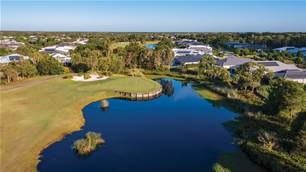
Travel Feature: Golf’s Sunny Side
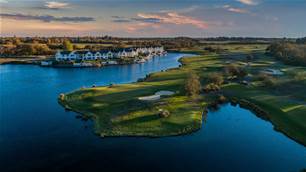
Review: Clearwater Golf Club

